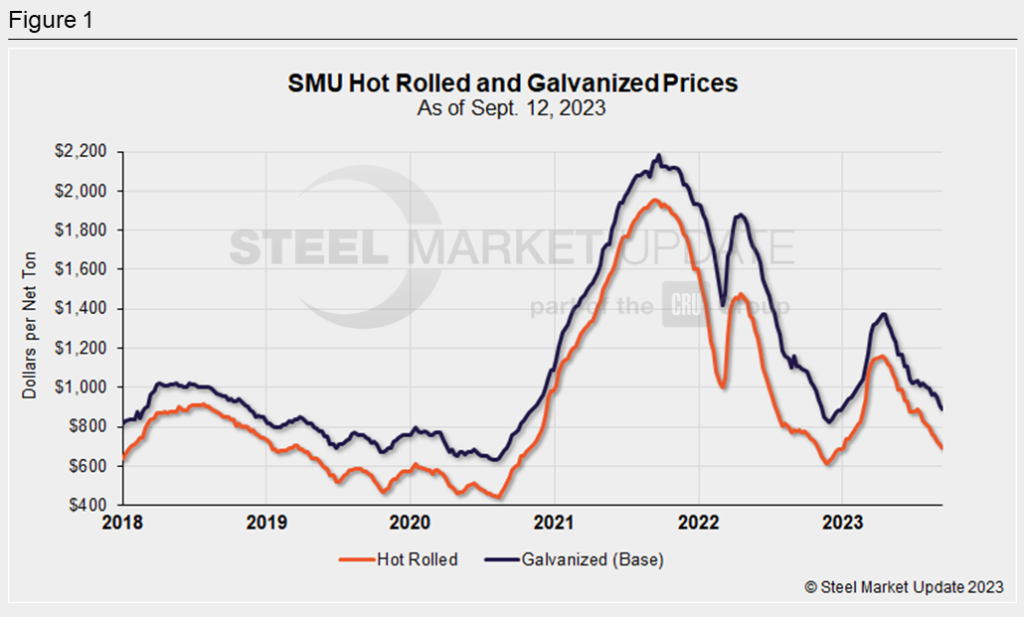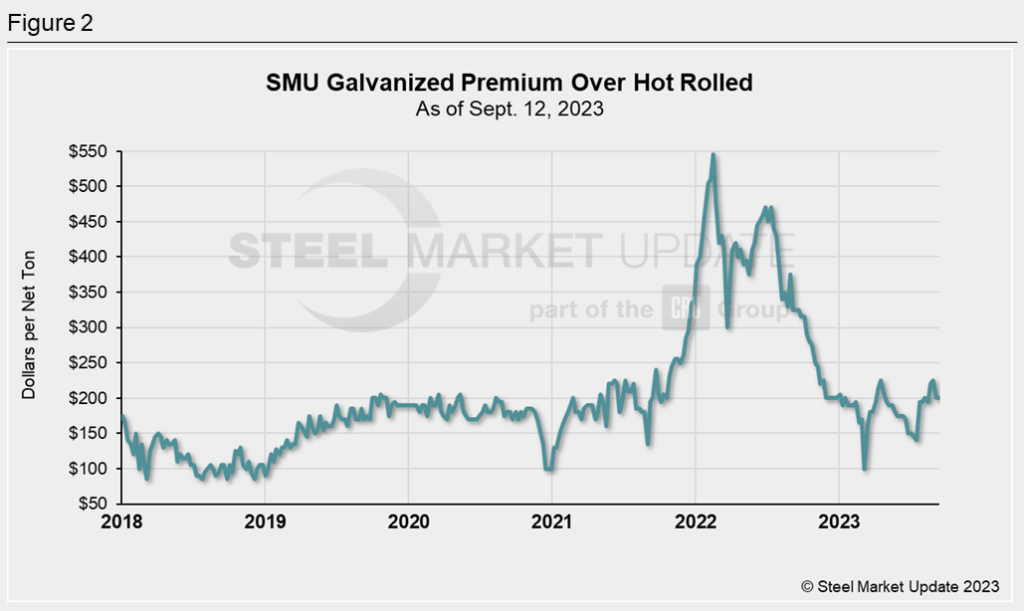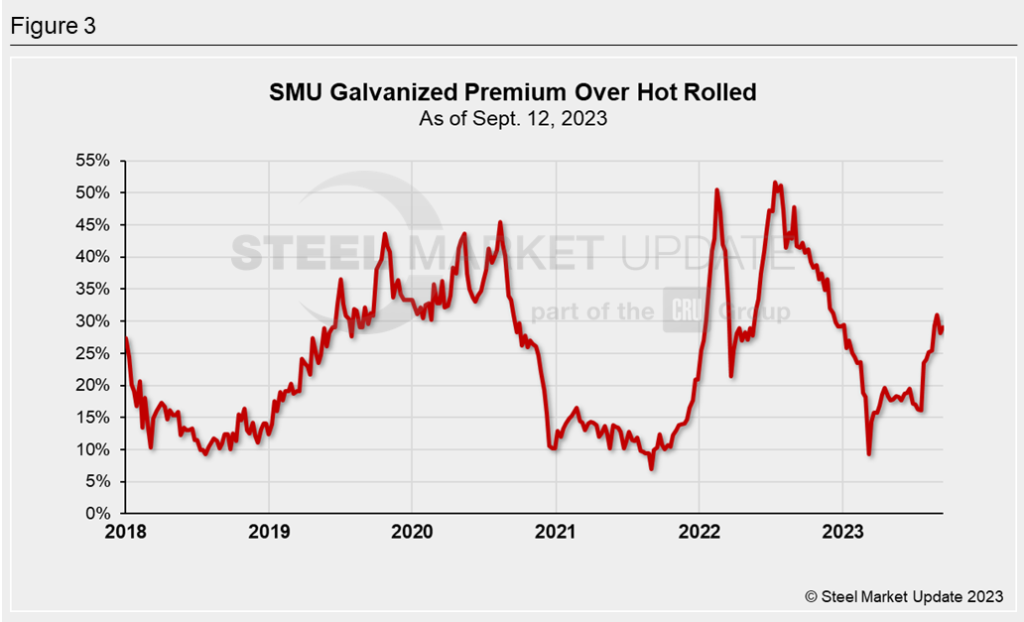SMU Data and Models
HRC vs. Galv Price Spread Widened This Summer
Written by Laura Miller
September 15, 2023
The spread between hot-rolled coil (HRC) and galvanized sheet base prices widened throughout the summer as hot rolled prices declined faster than those of galvanized.
At summer’s start, galvanized base prices held, on average, a $170 per net ton, or 19%, premium over hot rolled prices. That spread rose to as high as $225 per ton, or 31%, during the week of Aug. 29. This week, the spread came in at $200 per ton, or 29%.
We arrived at that latest figure using the following analysis based on SMU’s weekly pricing data.
Figure 1 below shows SMU’s HRC and galvanized base prices as of Sept. 13.
The average HRC price was $975 per ton at the start of summer during the week of June 20. The price rose to as high as $890 per ton during the week of July 11. It has since fallen for nine consecutive weeks to sit at $690 per ton this week.
Galvanized sheet base prices were $1,045 per ton, on average, during the week of June 20. Prices bounced up and down throughout the summer, but that was the highest the price got. As of Sept. 12, galv prices fell for a third consecutive week to $890 per ton.

In our last hot rolled vs. galvanized price analysis during the week of Aug. 1, the spread was $195 per ton. This week, the spread came in at $200 per ton.
As you can see in Figure 2 below, the spread is down considerably from the levels seen in 2022.

Figure 3 shows the galvanized premium over hot rolled as a percentage of the HRC price.
At summer’s start, the premium was 19%. It fell to this summer’s low of 16% during the weeks of July 11 and 18 before spiking to this year’s high of 31% during the last week of August.
This week, the spread came in at 29%.

You can chart historical HRC and galv prices using SMU’s interactive pricing tool on our website.

Laura Miller
Read more from Laura MillerLatest in SMU Data and Models

SMU Survey: Buyers’ Sentiment rebounds from multi-year low
Both of SMU’s Steel Buyers’ Sentiment Indices edged higher this week. Current Sentiment rebounded from a near five-year low, while Future Sentiment rose to a two-month high

SMU flat-rolled market survey results now available
SMU’s latest steel buyers market survey results are now available on our website to all premium members.

SMU Survey: Sheet lead times pull back after early-June blip, plate holds
Following the uptick seen two weeks ago, lead times eased this week for all four sheet products tracked by SMU, while plate lead times held steady, according to this week’s market survey.

SMU Survey: Pricing power abruptly shifts to steel buyers
The majority of steel buyers responding to our latest market survey say domestic mills are more willing to talk price on sheet and plate products than they were earlier this month. Sheet negotiation rates rebounded across the board compared to early June, while our plate negotiation rate hit a full 100%.

Service centers: Mill orders down marginally in May
SMU’s Mill Order Index (MOI) declined for a third straight month in May, but only marginally.
